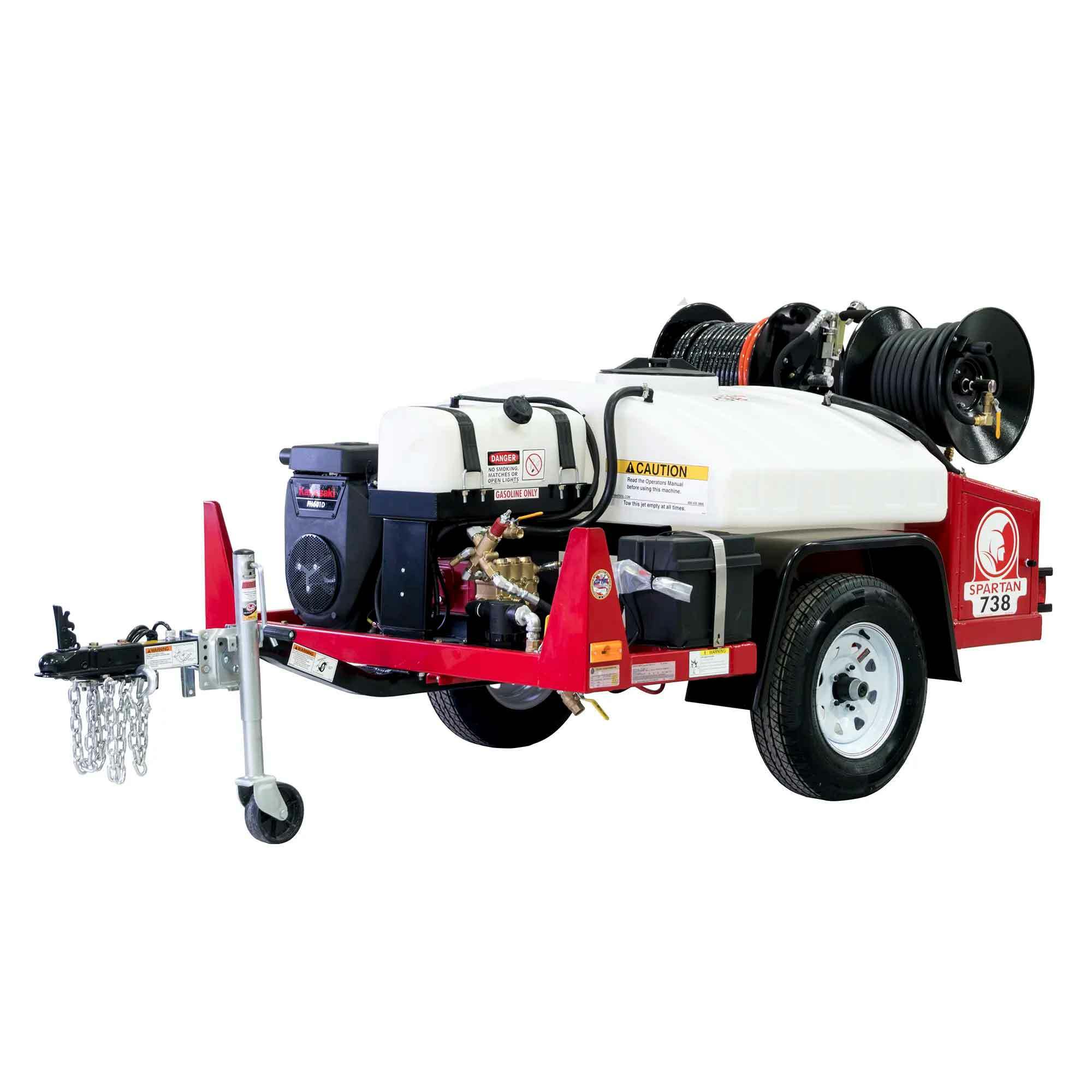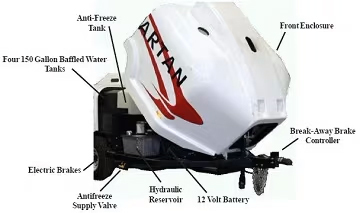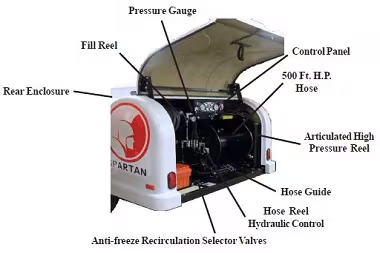If you are considering a sewer jetter for your growing plumbing business or perhaps as another tool in your building maintenance arsenal, there are a number of things to consider. This page is designed to provide you with basic information on equipment and typical sewer jetting applications for residential and commercial drain problems. Whatever your interest or needs, feel free to reach out to our team of jetter experts for more information or a demonstration. To find a sewer jetter expert in your local area, use our Territory Manager Locator service or call our toll-free hotline at 800-435-3866 during standard business hours Monday through Friday.
What’s a Sewer Jetter?
Sewer jetters, also known as “hydro-jetters” or “water jetters”, are powerful drain cleaning machines that use high-pressure water jets to clear obstructions in residential and commercial drain pipes as well as larger municipal sewer systems.
Simplicity of use, safety, and efficiency of cleaning are the main reasons many plumbers and drain cleaning professionals are turning to hydro-jetting as the tool of choice.
Sewer jetters can be truck mounted and may carry up to 1,500 gallons of water for large sewer cleaning jobs, or they can be mounted on a trailer and pulled by a large van or small truck. Smaller water jetters can be mounted on a cart for light residential and commercial applications.

How Does a Jetter Work?
A high pressure sewer jetter consists of a pump, a motor or engine, a hose reel, a given length of hose and a various assortment of nozzles. Portable water sources may include one or more water tanks; the Spartan High-Flow Ultimate Warrior hydro-jetter, shown below, employs four baffled water tanks that keep the jetter balanced when tanks are full and the jetter is being towed to a job site.


The jetter's high-pressure pump is key to delivering powerful jets of water needed to clean drain and sewer pipes. High-pressure hose is wound on a powered reel that enables the operator to retract the hose easily -- 500' of hose weighs several hundred pounds.
A pipe is cleaned with a high pressure water jet by directing water pressure and flow through a nozzle. Controlled water pressure and flow propels a water jet through the sewer pipe allowing it to remove and wash away the obstruction. High-pressure water jetters usually operate with water pressures up to 4,000 PSI with flow rates of 2 -- 25 gallons of water per minute. Some municipal hydro-jetters have flows up to 120 gallons per minute. The bigger the pipes, the larger and longer the water jet hose is needed to clean them properly.

Ideally, a sewer pipe is cleaned from the lower end of the pipe and the hose propels itself to the higher end of the pipe. By slowly withdrawing the jet hose, the water pressure and flow cleans the line most effectively. When it is impossible to clean from the lower end of the pipe, the pipe must be water jetted several times to remove all the debris. A skilled operator can effectively clean a drain/sewer regardless of the obstacles in their way.
Who Uses Sewer Jetters?
Most of our customers who purchase hydro-jetters are plumbers and drain cleaning companies who perform these services for residential and commercial customers. These customers are running their own businesses and will invest in hydro-jetting equipment if they are looking to get into larger commercial accounts.
Facilities managers often choose to purchase sewer and drain cleaning equipment in order to control their costs, which provides them with the ability to set their own drain maintenance schedules. Facilities operators are also concerned about potential interruptions to business operations that can result due to clogged sewer drains. Building sanitation is also a major concern for hospitals, schools, government offices, resorts, and so on.
 US Dollars
US Dollars

